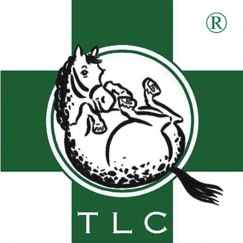KILLER DISEASE STRIKES THE SHOWING WORLD
A lethal disease is sweeping
the world of horse showing. Presently there is no cure and the disease is not
fully understood. The disease has been given the acronym ODL. Horse vets are so
concerned that, this year, two international conferences have been convened to
discuss the problem. Although the disease can strike any horse it seems to affect
animals involved in the showing world much more commonly. The symptoms can vary
from a quite insidious onset to a sudden attack which leaves the horse in considerable
distress and pain, often unable to rise. The organs affected vary but usually
involve the gut, liver, kidney and feet. The eyes are affected in the early stages,
the affected animals develop a mild opacity of the cornea; giving the eye a dull
slightly cloudy appearance. Approximately 20% of cases have to be destroyed and
the remainder are usually left crippled for life. As yet no infective organisms,
such as bacteria or viruses, have been consistently isolated from affected horses.
Horse are being struck down at grass and whilst stabled and in work.
Professor Philip Johnson
of the University of Missouri, a pioneer researcher into ODL, comments "Greater
than 30 new pharmaceuticals are in various stages of research. However, it will
likely take many years before any of these drugs are shown to be useful and safe
in horses".
There is an increasing awareness
amongst vets and researchers that the incidence of the disease is associated with
certain types of feeding and management practices. These can lead to the development
of cells within the abdomen which begin to secrete hormones, in a totally unusual
and hitherto unsuspected manner. These hormones interact with hormones from the
horse's pancreas and change the way the horse's energy metabolism operates. The
altered hormone balance is thought to adversely affect the cells lining the blood
vessels, leading to impaired blood flow and vasoconstriction. Additionally, affected
mares are found to be difficult to get in foal.
A side effect of this hormonal
activity is a subtle change in the horse's shape as it develops swellings on the
top of the neck, around the loins and tail head and the udder or sheath. These
swellings can be very difficult to get rid of. Once these changes have taken place,
clinical experience indicates that many horses become metabolic cripples for life.
They are unable to handle their food normally and are subject to the devastating
effects of ODL. Researchers are becoming increasingly convinced that the predisposing
factors to ODL begin early in the horse's life. Professor Johnson states "
Management practices that promote the development of (ODL) are likely initiated
during the first 10 years of the horse's life".
So, what is ODL and how
can you prevent your horse dying from it. Experience of vets involved with the
condition indicates that although the disease is devastating in affected horses,
in many cases it can be prevented. So what are the feeds and management practices
which we should avoid in order to safeguard the horses we love and cherish?
Primarily the secret is to avoid feeds which are high in calories. When fed to
horses, and ponies, in excess of their energy needs these feeds start the disease
process by making the animal lay down fat. In fact it is the fat cells within
the abdomen which secrete the abnormal hormones which upset the horse's metabolism
so badly. Coarse mixes, high energy nuts and cubes and straight grains are the
danger feeds which lead not only to ODL but osteochondrosis when fed to young
growing horses. Instead chose forage feeds, which are high in digestible fibre
but low in calories, alfalfa, hay, straw and unmolassed sugar beet are good types
of feed to chose.
In addition to commercially
available feeds, owners should be aware of the dangers of allowing the horse access
to fresh grass, as this can be very high in energy. The secret to managing horses
to avoid ODL is to make sure you keep your horse at a condition score of 2½
to 3. That is not so thin that you can see his ribs but so that you can feel them
easily when you run your hand along his side. He should not be allowed to carry
fatty swellings along his crest or loins or sheath as this immediately puts him
at high risk of ODL.
So why is ODL so much more
common in show horses ? From the foregoing you should be able to answer this question
yourselves. It is because show judges, generally, demand that animals be fat if
they are to have a chance of winning a rosette. Robert Eustace FRCVS Director
of the Laminitis Clinic opines, "Condition is fat. Show condition is obese.
You can make your horse fit and healthy by developing muscle tone through exercise
without the need to have him fat. Until show judges and breed societies begin
to understand how their predilection for obese show animals is directly responsible
for the high incidence of ODL, hundreds of horses will continue to die every year.
Intentionally encouraging a horse to develop a disease is cruelty. As exhibitors
you should seriously think of boycotting classes judged by people who demand obesity
as a prerequisite for success".
So what does ODL stand for
- Obesity Dependent Laminitis (also known as Metabolic Syndrome).
